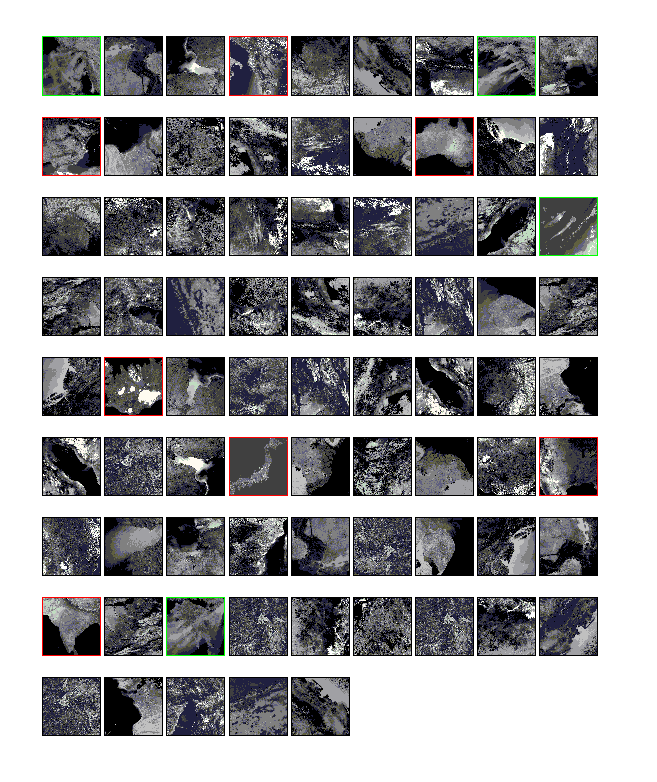Curiosity Cloning - DEMO at ESTEC
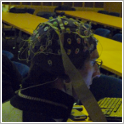
The third experiment of the project Curiosity Cloning was made in 'real' conditions (i.e. outside a lab) at the European Space and Technology Center (ESTEC).
Experiment Description
In this experiment the subjects were presented first with a sequence of Earth Observation images (taken from the instrument MERIS on board the ENVISAT satellite) and instructed to mentally count the number of images containing a hurricane.
In a second phase of the experiment (the curiosity phase), subjects were presented with more Earth Observation images (no hurricanes present anymore) and instructed to count the number of 'interesting' images. A probabilistic model built using the data coming from the first part of the experiment was then used to rank the images presented to the subjects in the second part of the experiment according to their probability of belonging to the class 'interesting'. For all subjects you may see such a rank below.
The experiment (performed as a DEMO during a BMI workshop that took place in ESTEC, Noordwijk) was performed without taking any precautions to diminish interferences, noise or other potentially distracting environmental effect.
Watch our explanatory video
Results of the training phase
Here we show the ROC curves of the classifier built using the data recorded from five subjects that performed the experiment using the four node setup of DCU. An ROC curve is, essentially, a measure of the quality of the classification. A random classification would result in a straight line from the origin to the upper right corner.
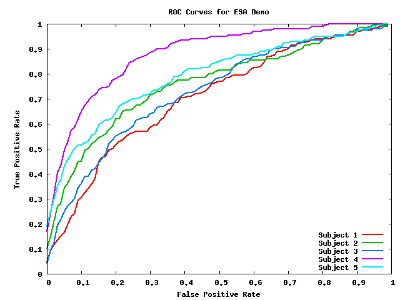
As it appears from the curves, all subjects produced a distinct P300 response that was classified correctly in most cases. Subject #4 was our 'best' subject during the experiment (showing a high degree of concentration) which is reflected in the higher AUC (Area Under Curve) appearing in the graph.
Image Sequence of the Curiosity Phase
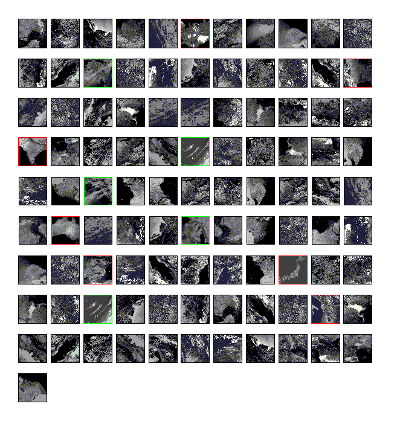
DCU - Four Node EEG
Below you see the images ranked according to the subject's curiosity. Some images have a colored border, these are the images that contain either a clear coast line (say a country) or a fire event taking place. You can appreciate how these objectively interesting images are ranked, in a statistically significant manner, higher by all subjects. In fact one would expect one of these images per line if the images were ranked at random. All subjects have from one to three of these images in the first line.
Subject #1
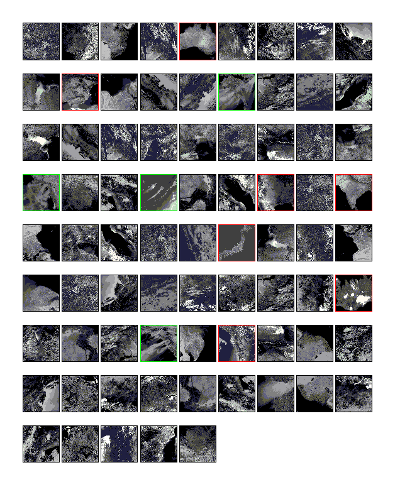
Subject #2
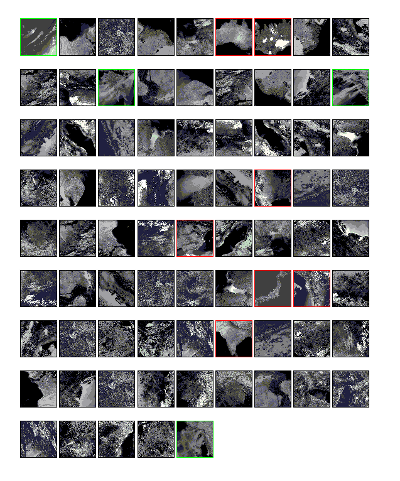
Subject #3
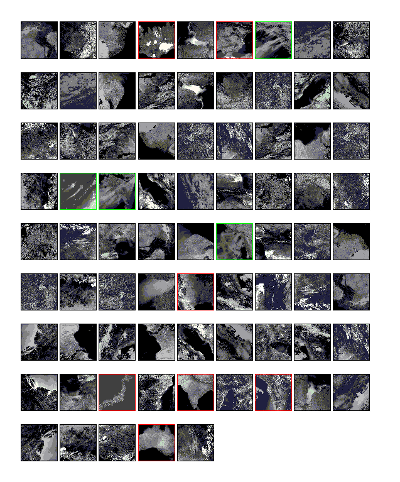
Subject #4
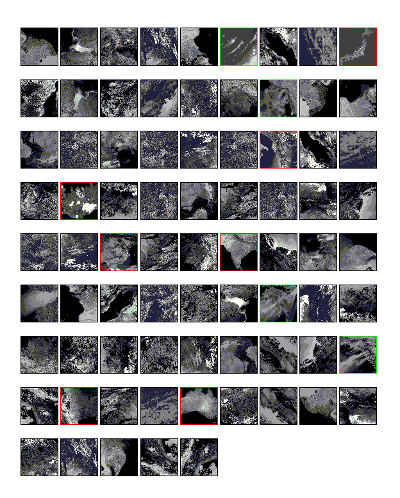
Subject #5
